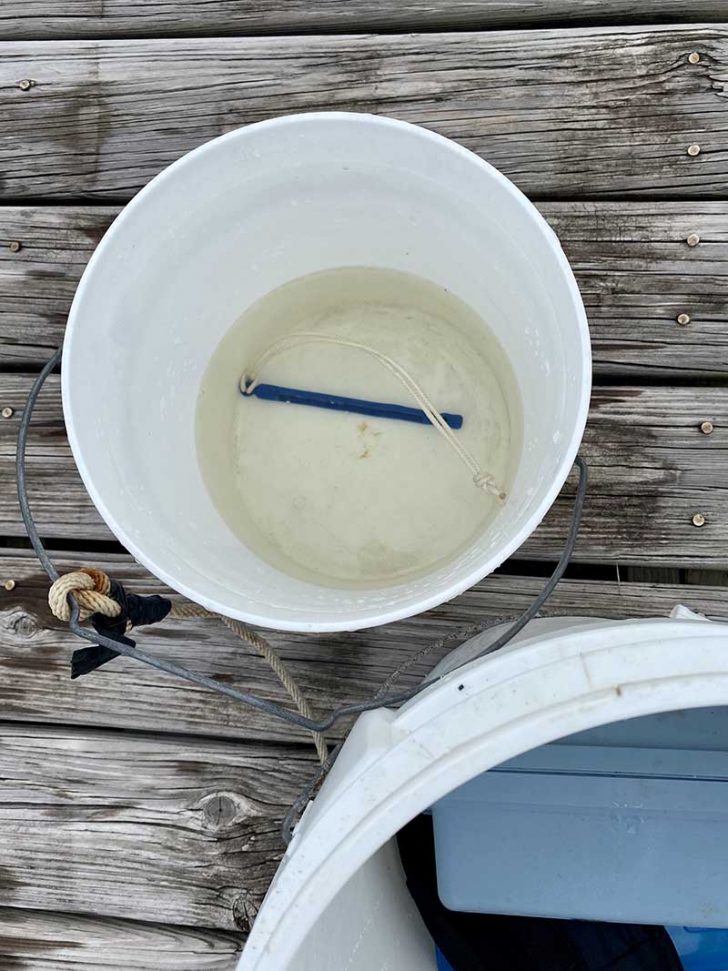
By Michael Conner, Executive Director
Indian Riverkeeper (IRK) wishes Coastal Angler Magazine readers a Happy New Year, and January ushered in some development’s worth watching.
At the southernmost end of the Indian River Lagoon, the big news is that the damaging, freshwater discharges from Lake Okeechobee into the St. Lucie River have ceased. Many water advocacy organizations and stakeholders, including IRK, attended numerous virtual, weekly public calls with the Corps to make clear the damage occurring to natural habitats such as oyster reefs in the St. Lucie River and seagrasses in the lower IRL within proximity of the Crossroads of the Lagoon and river just inside the St. Lucie Inlet. The total stoppage happened on January 9, 2020 on the east coast, and the discharge volume was brought down to a “beneficial” 1,000 cubic feet per second for the Caloosahatchee River watershed. That river needs that amount of Lake water to keep a salinity level that benefits native eel grasses in the upper estuary.
There are no promises however that the discharge stoppage is permanent. The Corps is responsible to bring the Lake elevation down to 12.5 feet by June 1, as mandated by the current LORS (Lake Okeechobee Regulation Schedule). Indian Riverkeeper will be providing updates on this situation on its face book page.
Lagoon Seagrass Restoration Effort
Seagrass density is declining Lagoon-wide due to sundry stressors from the 1.6 million residents living along the estuary. An aquatic restoration firm, Sea & Shoreline, has placed two acres of seagrass into what they call a GrowSAV Herbivory Exclusion Device (HED) at Tucker Cove in the IRL near Ft. Pierce, thanks to a grant from the Indian River Lagoon Council, which oversees the Indian River Lagoon National Estuary Program. The firm will monitor and maintain the project for three years. The HEDs serve as a cage that prevents manatees and other herbivores from eating the grasses. Sea & Shoreline biologists claim the project will help researchers better determine the path to recovery for native seagrasses in the Lagoon. The location was picked because the water quality there is better than that in much of the northern Lagoon. Volunteers planted 10,000 units and 250 4-inch peat pots worth of shoal grass, which is among the hardiest of seagrasses, and a native species in the Lagoon. For more information on Sea & Shoreline visit www.seaandshoreline.com.
Jensen Beach Fishing Access Threat

In early January bridge-fishing anglers were shocked to find No-Fishing signs erected by the Florida Department of Transportation (FDOT) on the popular Jensen Beach Causeway bridges. The causeway’s catwalk is not posted. The easternmost relief bridge, among the most popular land-based fishing spots in Martin County, is fished by residents and winter visitors alike, with main targets such as pompano, black drum and sheepshead, flounder, snook and snapper in the mix.
Indian Riverkeeper learned of the closure a day after the signs went up and made inquiries to the Martin County Board of Commissioners and the FDOT. County commissioners claimed no knowledge of the closure and IRK Executive Director Mike Conner made public comment at the January 5th Commission monthly meeting, a day after discussing the situation with an official at FDOT who claimed that citizens’ complaints about fishing-related litter had increased over a two-year period, giving the agency no choice except to close the structures to fishing. Indian Riverkeeper and local anglers offered to police the bridge and spread awareness among bridge regulars to improve the litter situation, and DOT suggested that the County enter an agreement (contract) with any group, club or volunteers who would initiate the effort to correct the problem. At the Commission meeting, IRK suggested a trial period, and a willingness to enter a contract with the County. We also suggested the placement of trash cans on the bridges, and better signage and enforcement of no-littering laws on the books. The County has trash cans on all County Parks and all beach accesses and we maintain that the fishing bridges should have the same receptacles within easy access to anglers.
We will continue to fight for re-opening of the causeway to fishing and hope that this development serves as a lesson for all Lagoon anglers who enjoy bridge fishing in their region. Bridge and shoreline fishing trash ends up in the water. Use it, but respect it, or lose it.
Hit the Surf with Indian Riverkeeper!
Indian Riverkeeper will throw the inaugural annual Sand Spike Shootout, as a fund-raising event on the weekend of Feb. 27-28, 2021. This will be a paid-entry tournament with all proceeds going to Indian Riverkeeper. Prizes will range from top-of-the line surf tackle to coolers and accessories and more.
Target species will be pompano and whiting. For more information on format, hours and rules, visit www.theindianriverkeeper.org or our Facebook page, Indian Riverkeeper.




